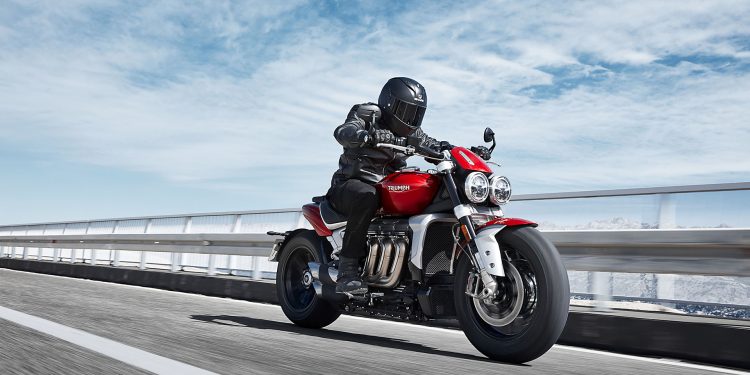2023 Triumph Rocket III review
Words: Peter Louisson | Photos: PL/Triumph Motorcycles
There are many ways, as the saying goes, to skin a cat, though in truth I know of none. However, when it comes to the vanishingly small world of power cruisers, you can either shoehorn a large motor into an appropriate frame and call it a day, something that Triumph has considerable experience in doing with its Rocket III. Or you can build a lightweight minimalistic frame and insert an appropriately large V-twin, something Ducati has plenty of experience doing with its Diavel. Both are now essentially into their second generations, and both are rocketships of the highest order.
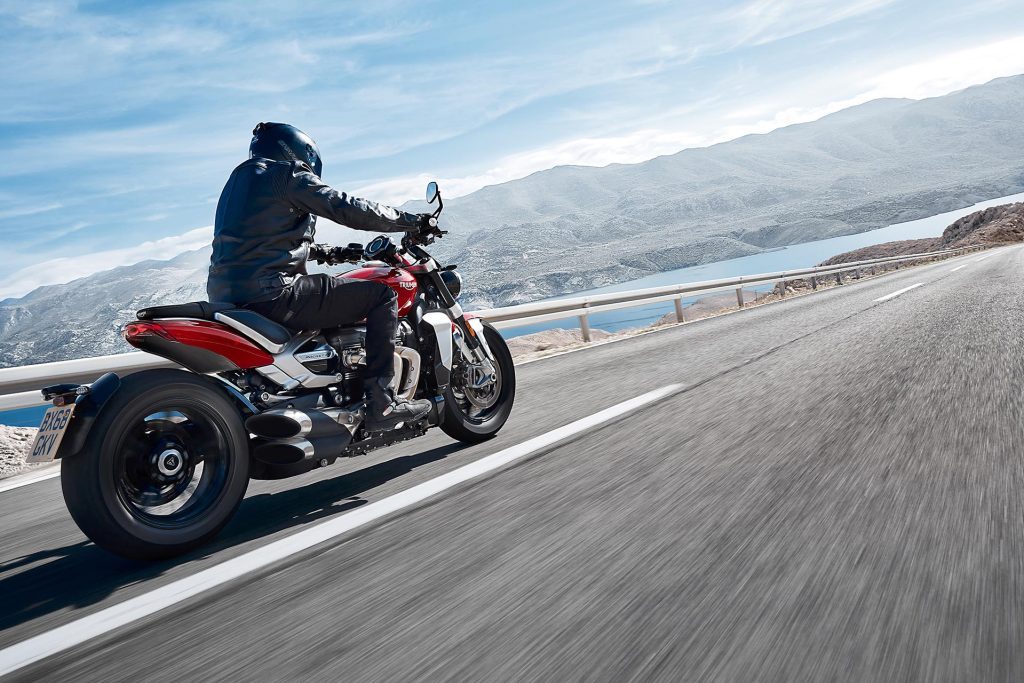
A pair of British brothers recently got them both together on a disused runway and had a lash at acceleration from a standing start (Diavel the winner) and roll-on acceleration in various gears (Rocket III the victor). So there’s probably not much between this pair; a pity the brothers had no timing gear.
We know how quick the second-generation Rocket III is because Triumph released a video of their tester lighting the wick on their newbie. Just 2.73sec later, emerging from the smoke of an over-rotated rear tyre, was the Rocket III hitting 100km/h. So it’s a power cruiser, no question. From our perspective, that puts it neck and neck with the fastest accelerating bike we’ve ever tested, Suzuki’s latest Hayabusa, clocking in at 2.70sec, and costing $29k. That compares with $41,990 for the Rocket IIIR edition you see here. For an extra grand you can get the GT with a flyscreen and backrest. It isn’t as clean to behold but the screen we’d probably option in regardless. You pay more then for the Brit; you’re getting rather more capacity as well, for at 2458cc this is the largest production bike engine on offer, well ahead of anything from the Americas or anywhere else for that matter. If’n it’s the biggest bike engine you’re after, you’re looking at it. The main competition in terms of power cruisers is Ducati’s XDiavel S; with its 1262cc V-Twin it costs $42,500. We’ve not ridden this, sadly.
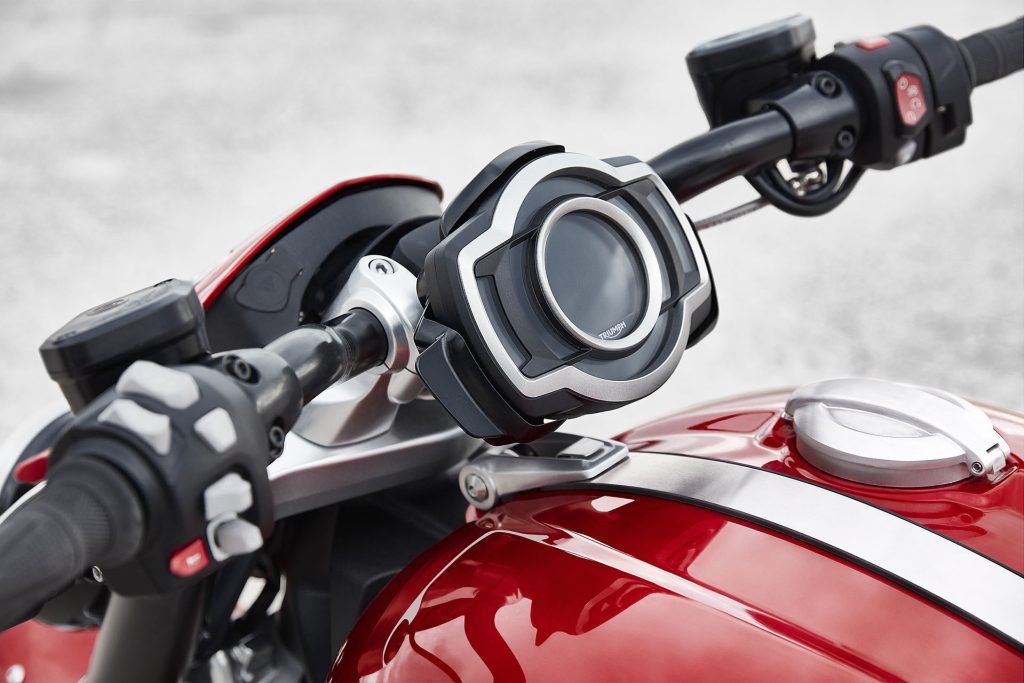
Powwwer
Anyhow, the folk at Triumph NZ are much more generous and they’ve kindly let me have some seat time with the second-generation Rocket III which features, in the main, more appropriate styling for its new power cruiser role – an awesome muscle-bound look – an even bigger IL3 engine as mentioned and, get this, 40kg culled from the overall package, 18kg from the engine alone. It’s still hardly a lightweight at 319kg brimmed but the power-to-weight figure obviously improves, with peak output up from 109 to 123kW at a relaxed 6000rpm. The torque figure is unchanged, still at 221Nm, oozing forth at 4000rpm, a bit higher than before. Triumph engineers removed 11kg from the crank alone and it is now said to spin more freely. The output is grounded via a massive 240/50R16 rear tyre that’s spun up by a shaft drive system.
I’d just returned the Speed Triple 1200 RR, another Triumph, and about as far removed from the Rocket III as you could imagine. The Rocket III has a classic power cruiser riding position, with the most minor of forward leans to the low-rise, wide-set bars, feet on mid-mounted pegs, and you’re seated in an encompassing embrace to counter the headlong rush.
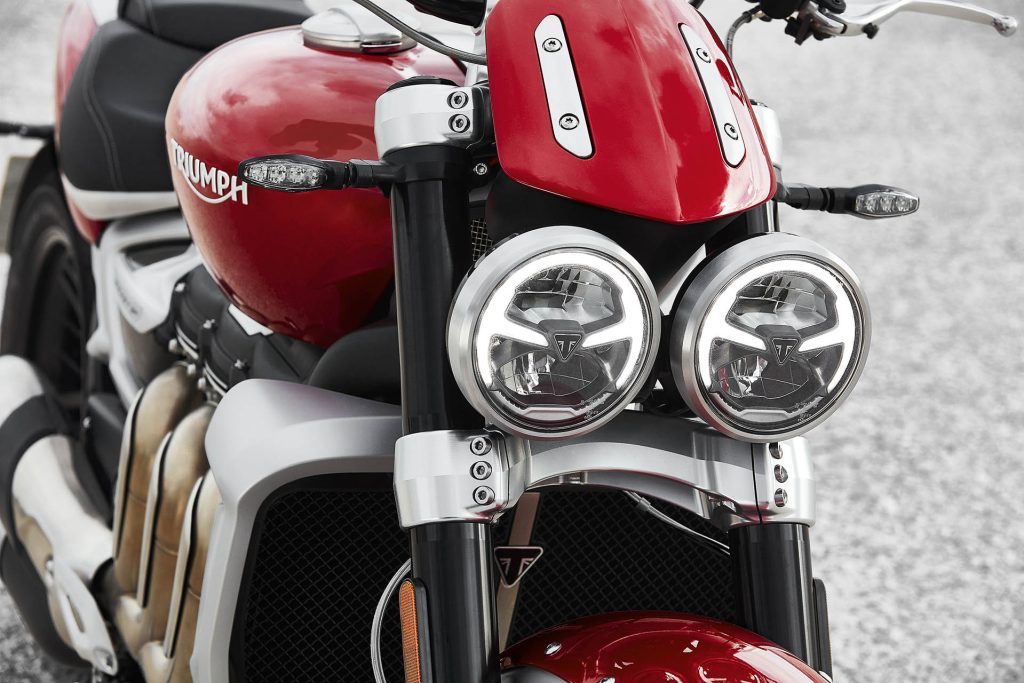
Rocket by name and nature
And that rush? As with all such machines, it’s a bit dependent on how you hold your tongue, and how quickly you upshift; this won’t quite make it to 100 in first gear. Fortunately Triumph NZ had added one accessory to the machine, an up and down quickshifter. Glad they did because this is arguably the best I have ever encountered. Neutral is a snip to find and there’s no clunking into first gear. Shifts are blazing going up the box, but few get it right going down; this is exquisite. Just give a blip on the gas momentarily before downshifting (without the clutch) and it snips beautifully to a lower gear.
Once we’d nixed the TC and engaged Sport in Rider mode, it’s a matter of getting out of the clutch as soon as possible, and upshifting in a blur. Get it just right and you’re rewarded with a 0-100 pass in under 3sec (we managed a best of 2.95sec) on road, 0.2sec behind Triumph’s track effort. But I’d add it wasn’t easy; most runs were in the 3.1-3.3sec area. Bikes like the ‘Busa scale up at 266kg while the Diavel X is 235kg odd. Weight is always the enemy of acceleration feats. And for the overtake it just squeaked under 1.5sec, to the Busa’s 1.3sec run. It made no difference whether undertaken in second gear alone or upshifting from first to second. Most overtakes you can do in sixth with a mere wind on, or perhaps down one gear if the gap isn’t that big. We’d recently jumped off Harley’s Street Glide ST, another huge bike with a whopper engine, but this grunts even harder, happy to pull smoothly from 1500rpm. Gearing is similar to the Harley’s, with 100 showing up at 2250rpm. Most of the time 2000-3000rpm is heaps enough for day-to-day riding – the torque curve is flat from 2000-6500rpm apparently – while 3000-4000rpm has you dragging off everything around you. And it spins to over 7000rpm. Vibes are well sorted too, the bar end mirrors a picture of serenity and they give a good view of what’s behind, not of your riding gear.
There are a couple of areas where the Rocket III is special, the Stylema brakes being one – the fronts alone have sufficient bite to get the job done or you can use the rear to set corner entry speed – and the sensational Quickshifter being the other.
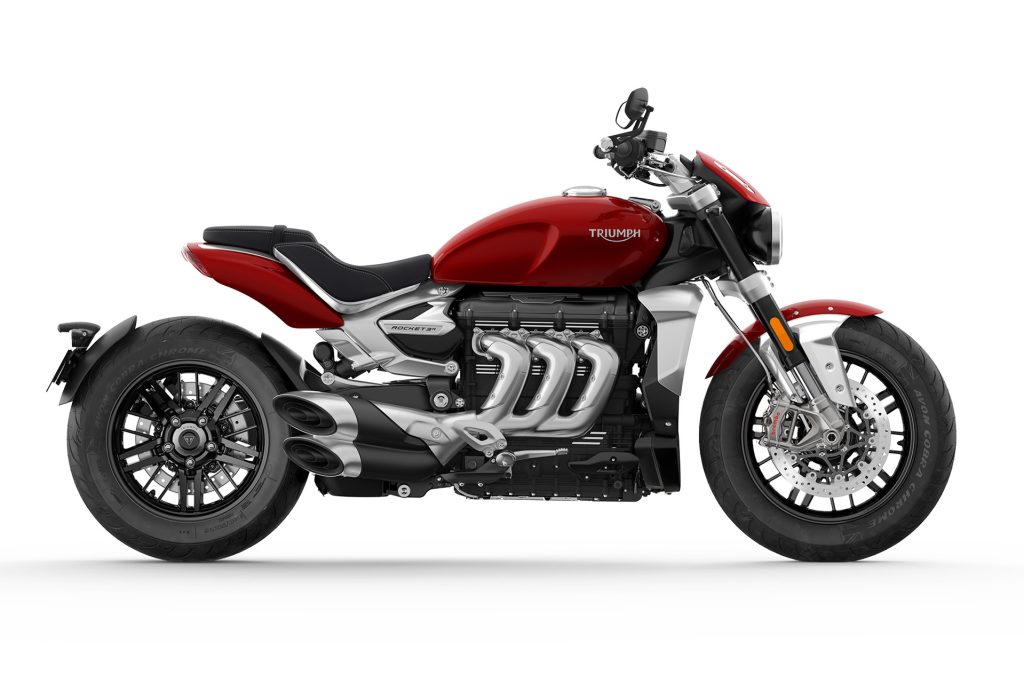
Does it Corner Though?
And guess what – the ride and handling are properly decent on the updated Rocket III too. You’d not credit how well this corners, despite its size, extended wheelbase and simply enormous tyres. So it’s a touch uncooperative turning at slower speeds, but once out of town it gets its boogie on. The wide bars help to initiate things, and it can lean over quite some way before the peg feelers scrape, generally in faster, more open corners. It’s not a sports bike but is a vast difference from the corner-shy original and is roughly Diavel-like in demeanour. Big fun then. The ride is fairly sophisticated too, with full adjustability at both ends.
It hasn’t the instrumentation, weather protection or the baggage of the, er, bagger we rode recently (Harley Street Glide ST) but then this is from a different class; it’s just that both have a sticker price beginning with a four. Neither is exactly abstemious on the juice front but then you get that with big capacity mills.
If it were me, I’d save the dosh and buy the Brit; it’s a lot more fun – haven’t grinned as much riding in ages – and much easier to manage if you can say that of something that’s the wrong side of 300kg; it hides its weight rather well.
The Rocket III R is one hell of a memorable ride.


